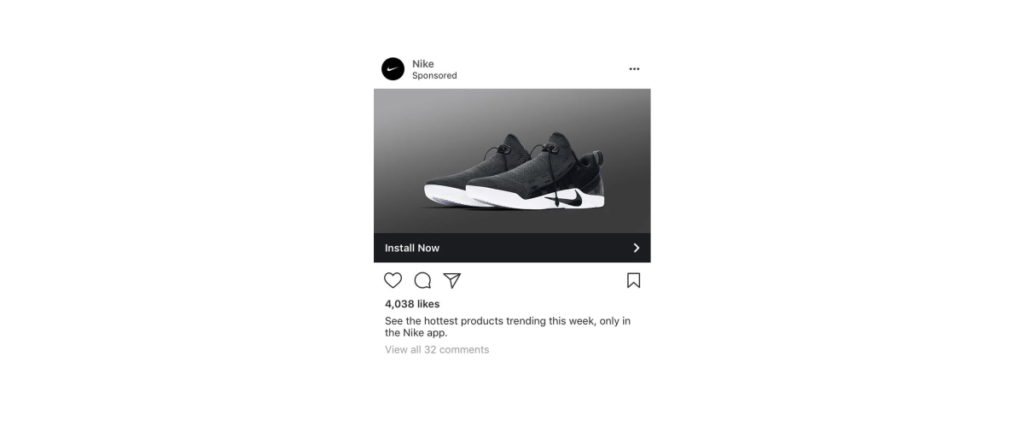Turn More Browsers Into Buyers With Ecommerce Paid Social Ads

People use social media to get inspired, find new products and make purchases. For ecommerce companies, social media has become critical to reach new audiences and sell more products.
For example, the hallmark of success for many ecommerce brands today is going “TikTok viral.” The #tiktokmademebuyit trend has over 57 billion views. It’s also helped ecommerce companies sell everything from heatless curling headbands to trendy candy.

If you’re an ecommerce brand, chances are you’re already using paid social ads to get your products in front of customers. On the low end, most ecommerce brands spend at least $1,000 per month on advertising. Others (16%) spend between $20,000 to $150,000 per month.
But how can you get the most out of your paid social budget?
In this guide, we’ll cover the effectiveness of social ads for ecommerce brands and dive into expert tips that you can use to improve your social campaigns.
The Importance of Ecommerce Paid Social Ads
Paid social ads have become critical to ecommerce. For one, most platforms are now pay-to-play. In other words, if you want to reach your audiences, you’re going to need to spend money. However, ecommerce paid social ads are also effective when you know the right tips.
Here are some statistics that illustrate the importance of paid social to ecommerce:
- Over 60% of direct-to-consumer brands worldwide list social as the leading customer acquisition channel.
- A Business of Apps survey found that 82% of people use social media to discover and buy products.
- An Accenture study found that shopping on social media platforms will reach $1.2 trillion by 2025. Gen Z and millennial populations will likely account for 62% of this social commerce spend.
- The value of social commerce sales was $992 billion in 2022, and forecasts project it to reach $2.9 trillion by 2026.
- Social media ad spending will reach $72.33 billion in 2023. It will reach $85.31 billion by 2027.
Paid social ads are also an excellent way for ecommerce brands to reach target audiences and get more sales. But social media best practices vary significantly from platform to platform.
Let’s dive into the best social media platforms for ecommerce businesses and how to create campaigns that increase sales.
Which Social Platforms Should Ecommerce Brands Consider?
The biggest players in the space are Facebook, Instagram, TikTok, YouTube and Pinterest. Let’s look at the pros and cons of each platform, tips for effective campaigns and more.
Facebook for Ecommerce
With nearly 2.98 billion monthly active users, Facebook is still the most popular social media platform. In 2021, it was also the platform where U.S. users spent the most time per day, which was 33 minutes.
Some of the top-performing ecommerce ads on Facebook focus on:
- Reviews and testimonials - Videos of customers and their experiences.
- Dynamic product ads - Show the right products to the right users.
- Exclusive offers - Make it easier for customers to use discounts directly from Facebook ads.
YouTube for Ecommerce
YouTube is one of the largest search engines in the world. And it’s becoming even more important for ecommerce marketing. Most (91%) of consumers prefer to see online video content from brands.
Since the release of YouTube Shorts, more brands are leaning into vertical video assets. When brands use vertical-friendly videos, Google has seen them get 10% to 20% more conversions per dollar.
TikTok for Ecommerce
TikTok has over 3 billion downloads and 50 million daily active users. As mentioned earlier, it’s becoming one of the best platforms for ecommerce brands to reach younger audiences. Over 27% of TikTok users will make a purchase through the app. Around 70% will buy products that they stumble across in their For You feed.
In addition, TikTok has been focused on making the app more shoppable for ecommerce, launching Shopping Ads.
On TikTok, the top-performing ecommerce ads focus on user-generated content and influencer marketing. Like most social media platforms, users want content that educates and entertains. When it comes to ecommerce paid social ads, they want to see actual people using products and look for authentic experiences over sales pitches.
Instagram for Ecommerce
Insider Intelligence predicts Instagram’s ad revenue to be $50.58 billion in 2023. With 61.3% of the platform's audience between ages 18 and 34, Instagram is how ecommerce brands reach millennial and Gen Z customers.
Shopping on Instagram is now an expectation. According to Instagram data, 70% of users don’t mind coming across an ad on the platform. Meanwhile, 90% of Instagram users follow at least one brand.
Here’s a simple Nike image ad. It shows the product and has a CTA for the customer to download the Nike app to access trending products.

Pinterest for Ecommerce
Ecommerce brands that cater to women may want to add Pinterest to their media mix. Over 76% of users are women.
It’s also where they go to get inspiration and discover products. Around 80% of weekly Pinterest users discover a new product or brand on Pinterest, often leading to a purchase or follow.
Top ecommerce brand categories for Pinterest include:
- Home Decor and DIY
- Food and Drink
- Art
- Beauty
Paid Social Ads Tips for Ecommerce
Simply running ads on different social media platforms isn’t enough. There’s a lot you need to perfect — from choosing the best type of ads and audience targeting to testing creative performance. To get the most out of your paid social media spending, here are some expert tips.
1. Begin With One Social Platform
We most often recommend Facebook first due to its popularity and ease of use. You can start with something as basic as boosting your organic posts.
Focus on the placements that can make the quickest impact on your goals with a single platform.
Then, use real-time data and results from that campaign to allocate budgets for the other platforms.
2. Produce Robust Creative
A robust set of ad creatives is necessary to capture the attention of potential buyers. However, you should also test the performance of your creative. Which videos get the most clicks and lead to higher conversion rates?
Testing creative will help you understand what types of content and ads resonate with your audience and decrease overall ad spending.
3. Work With a Holistic Ecommerce Ads Agency
Remember if you allocate your budget across too many efforts, you won’t win at any of them. Instead, align your ecommerce advertising strategy to the channels most relevant to your goals and stay flexible.
One way to do this is to work with an agency that doesn’t only focus on ecommerce paid social ads but manages your entire ecommerce marketing strategy. Goodway takes a holistic approach so you don’t rely on only paid social or search, but on the strategy that will get you the best results.
That could mean advertising online or offline, wherever your customers are most likely to buy. It also means that instead of measuring your marketing efforts in silos, we bring it all together for the full picture.
Looking for more hands-on help? Let our experts help you find the right marketing solutions for your business. Reach out to us to schedule a complimentary ecommerce advertising analysis today.
Social Media Ecommerce FAQs
What’s Needed To Advertise on Social Platforms?
Ecommerce brands typically need a shop or business account and product feed set up with the platform before you can begin advertising. Each social platform will have different feed specifications, so monitor your feed regularly and stay up to date with platform requirements.
Why Bother With Paid Social Ads?
Social platforms have largely shifted to a pay-to-play model, using algorithms to sift through the abundance of noise and streamline what users see. To reach the right customers, marketers must supplement their organic initiatives with paid campaigns.
What Types of Advertisers Are a Good Fit for These Ads?
Because social platforms are creative-driven, it’s important to feature attractive product images and videos. It improves the online shopping experience and makes it easy for consumers to visually search for products.
Brands with highly visual offerings, such as clothing, beauty products or accessories, are a natural fit.





